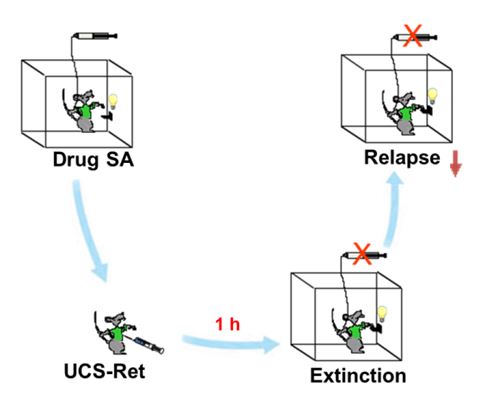Peking University, Oct. 21, 2015: Drug addiction has long been a bothersome problem. Scientists have developed cue-exposure therapies to suppress the patients’ desire to take drugs. The rational of the treatment is to link drug cues with an unfavorable experience, for example, giving a mild electric shock to a cocaine abuser when he sees some white powder (drug cues for cocaine). This technique works well at the beginning, but patients’ responses reemerge after exposure to the drug itself, the drug-associated environment, or passage of time.
In a 2012 Science paper, Professor Lu Lin and his team reported a conditioned stimulus (CS) memory retrieval-extinction procedure in rats and human. Typically, a memory retrieval-extinction procedure involves two steps: first, recall patients’ drug-associated memories 10 mins or 1 hour before step 2; second, repeatedly expose patients to the drug cues. The memory retrieval-extinction method could effectively reduce drug craving and relapse, giving new ideas to fighting against drug addiction.
 A diagram showing UCS retrieval-extinction procedure
A diagram showing UCS retrieval-extinction procedure
And now the group pushes this approach further. In a paper published in Nature Communication, they substitute the conditioned stimulus with non-contingent cocaine or methylphenidate injections. The novel process is called UCS retrieval-extinction procedure (UCS:unconditioned stimulus). It not only eliminates several limitations of the CS retrieval-extinction procedure, but also provides superior relapse prevention. Their data also show that this procedure is working through the regulation of AMPA receptor endocytosis in the basolateral amygdala, which enables further investigation into the mechanism of the new approach.
Their work is supported in part by the National Basic Research Program of China and the Natural Science Foundation of China.
For the original Nature Communication paper, please check:
http://www.nature.com/ncomms/2015/150714/ncomms8675/full/ncomms8675.html
